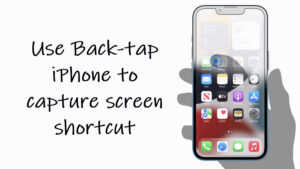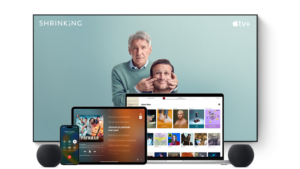Picture this: your phone is gasping for juice, your tablet’s flashing a sad battery icon, and your laptop’s about to call it quits. What’s your next move? You dig through that messy drawer, grab a charger that looks like it fits, and plug it in. Done deal, right? Hold up. Just because it fits doesn’t mean it’s legit. That’s what we’re here to unpack so you know which charger to actually use and why picking the right charger matters. And maybe just maybe you’ll be able to help your friend the next time he’s looking clueless or about to grab the wrong power brick.
Picking the right charger
Charging mistakes are more common than you think so picking the right charger can make all the difference.
1] Charger power outputs vary
Let’s begin with the fundamentals: power output, specifically volts and amps. A charger’s output is primarily determined by its voltage and current (amperage).
Crucially, the charger’s voltage must precisely match your device’s voltage requirement. For instance, if your device needs 19V, the charger must also provide 19V.

Regarding amperage, the charger’s output should be equal to or greater than what your device requires. Thus, a 2.15A charger will work fine for a 1.58A device, as amperage is drawn by the device, not forced upon it.
Simply put, voltage is the rule, amperage is the potential.
2] Cable quality impacts performance
You can have the best, most powerful charger type but if you connect it with a cheap, poorly made cable or bad wiring with not enough shielding, it just won’t carry the power efficiently. That’s why, in most bad charging experiences, the cable is the weakest link. Don’t overlook the cable. Its quality matters too.
Let’s talk types. USB-A’s the OG—reliable but slow, topping out at 12W. The other end of the cable is either a Micro-USB, the one that’s mostly found on wireless headphones, smartphones and e-readers or Apple-specific Lightning Port found on iPhones.
Next type is USB-C. It’s fast—up to 100W—and handles data like a champ. It’s slowly replacing USB-A . The USB-C port can function as input or output. And at last, we have the Lightning cable which is still input-only, mostly.

3] Choosing a wrong charger could ruin your battery
More and more brands are ditching the free charging brick, leaving us to either buy one separately or dig out an old one and hope it works. That makes it super important to double-check if your charger actually plays nice with your device.
Just because a plug fits it’s safe to use. The polarity—the direction electricity flows—has to match exactly. In many cases, especially with older barrel connectors (the ones with a ring and a pin), polarity issues can be a real risk.
Some chargers have the center pin as positive and the outer ring as negative. Others flip that around, even if they look exactly the same. Get it wrong, and you could fry your device. Think of it like a one-way street—electricity needs to flow the right way, or there’s going to be trouble.
So, how do you know if the polarity matches? Is there a secret code? Kind of. Look closely at the label on the power adapter—near the voltage and amp info, there’s usually a tiny symbol: a dot connected to a plus sign inside a broken circle (like a “C”), and a minus sign on the other end. That symbol shows whether the center or outer ring carries the positive charge.

Now match that with the symbol on your device—usually printed near the power port. If they don’t match, don’t use it. The good news? USB-C doesn’t mess with any of this. Polarity, voltage, current—all sorted out automatically by the chips inside. One less thing to worry about.
4] Fast Charging isn’t one-size-fits-all
Let’s talk Fast charging. Everyone wants it, right? Plug in for 10 minutes and get hours of battery. Most brands swear by faster and faster charging technologies, but it is important to remind yourself that the absurdly advertised charging speeds are often only achievable under laboratory conditions with very specific settings.
Apart from that, Lithium-ion batteries that power a wide array of everyday portable electronics contain an electrolyte solution. Over time, tiny crystals can form in that liquid. It’s a natural process. These crystals can eventually block the flow of ions, which is how the battery stores and releases energy.
Crystallization can also speed up if you put more power into the battery through Fast Charging, which exposes the device to excessive heat. As phones aren’t built to vent excess heat from the battery effectively, they are more prone to overheating and can eventually end up degrading sooner than expected.
5] GaN Is changing how we power up
GaN chargers utilize Gallium Nitride, a wide-bandgap semiconductor material, in their power conversion circuitry. This allows them to operate at higher temperatures, voltages, and frequencies, making them well-suited for power electronics applications.

Unlike traditional chargers that often use silicon-based transistors and larger magnetics (including toroidal coils), GaN chargers can use smaller magnetics due to higher switching frequencies. They also employ high-frequency switching techniques, which reduce energy loss and heat generation compared to silicon-based chargers.
Wrap-Up
There are all kinds of adapters and ports out there for charging phones, tablets, and laptops—but not all of them work interchangeably. Knowing what your device needs, and how you typically use it, can make all the difference in picking the right charger.






